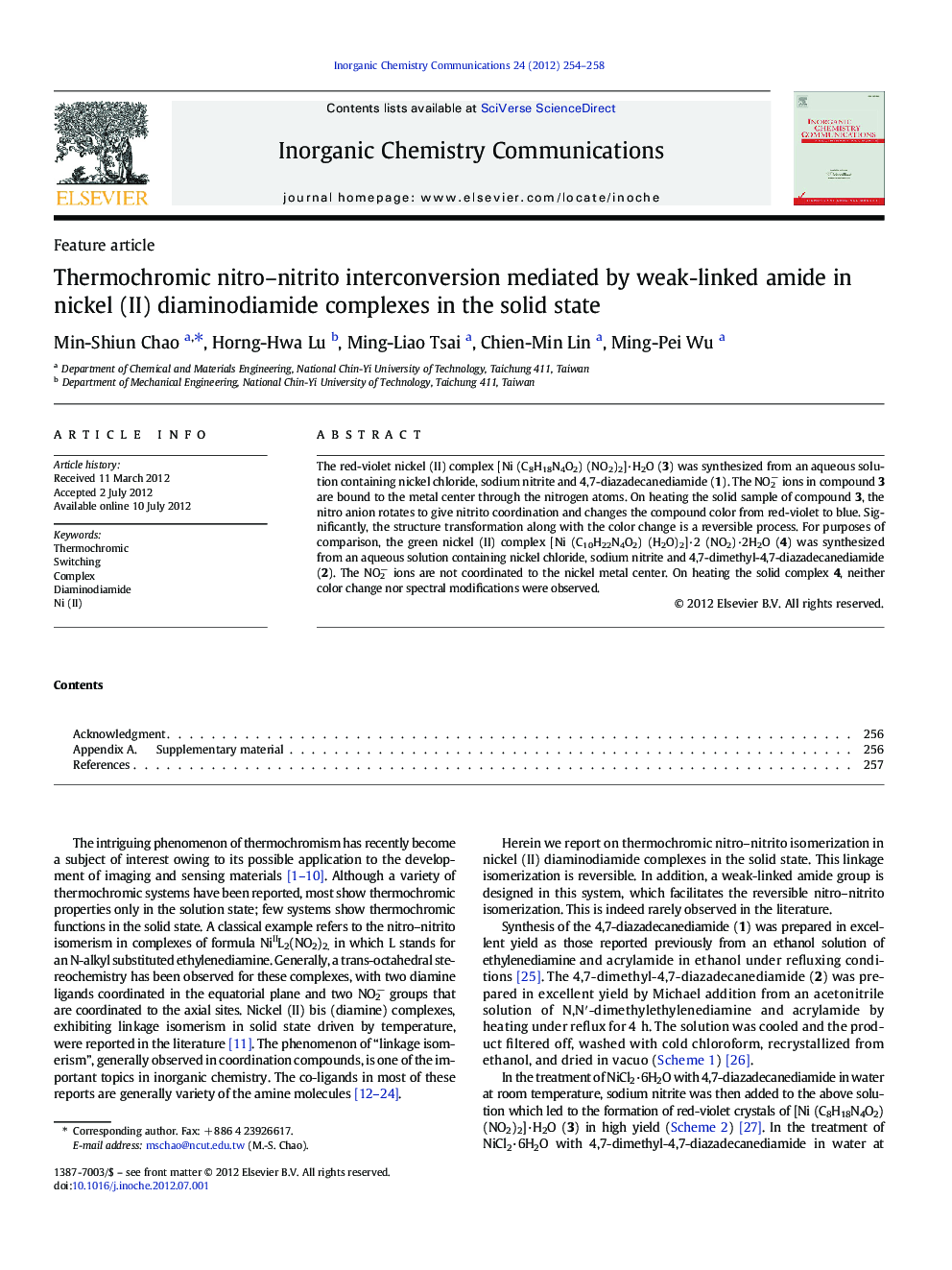| Article ID | Journal | Published Year | Pages | File Type |
|---|---|---|---|---|
| 1302358 | Inorganic Chemistry Communications | 2012 | 5 Pages |
The red-violet nickel (II) complex [Ni (C8H18N4O2) (NO2)2]·H2O (3) was synthesized from an aqueous solution containing nickel chloride, sodium nitrite and 4,7-diazadecanediamide (1). The NO2− ions in compound 3 are bound to the metal center through the nitrogen atoms. On heating the solid sample of compound 3, the nitro anion rotates to give nitrito coordination and changes the compound color from red-violet to blue. Significantly, the structure transformation along with the color change is a reversible process. For purposes of comparison, the green nickel (II) complex [Ni (C10H22N4O2) (H2O)2]·2 (NO2)·2H2O (4) was synthesized from an aqueous solution containing nickel chloride, sodium nitrite and 4,7-dimethyl-4,7-diazadecanediamide (2). The NO2− ions are not coordinated to the nickel metal center. On heating the solid complex 4, neither color change nor spectral modifications were observed.
Graphical abstractThe red-violet nickel (II) complex [Ni(C8H18N4O2)(NO2)2] · H2O (3) was synthesized from an aqueous solution containing nickel chloride, sodium nitrite and 4,7-diazadecanediamide. On heating the solid sample of compound 3, the nitro anion rotates to give nitrito coordination and changes the compound color from red-violet to blue.Figure optionsDownload full-size imageDownload as PowerPoint slideHighlights► The solid state thermochromic behavior assisted by the weak-linked amide group of Ni(II) diaminodiamide complexes was reported. ► The reversible nitro-nitrito interconversion in nickel(II) complex provide a new class of thermochromic materials with diaminodiamide ligands. ► The nickel(II) complex is of special interest in the design of devices for visual color change with temperature.
